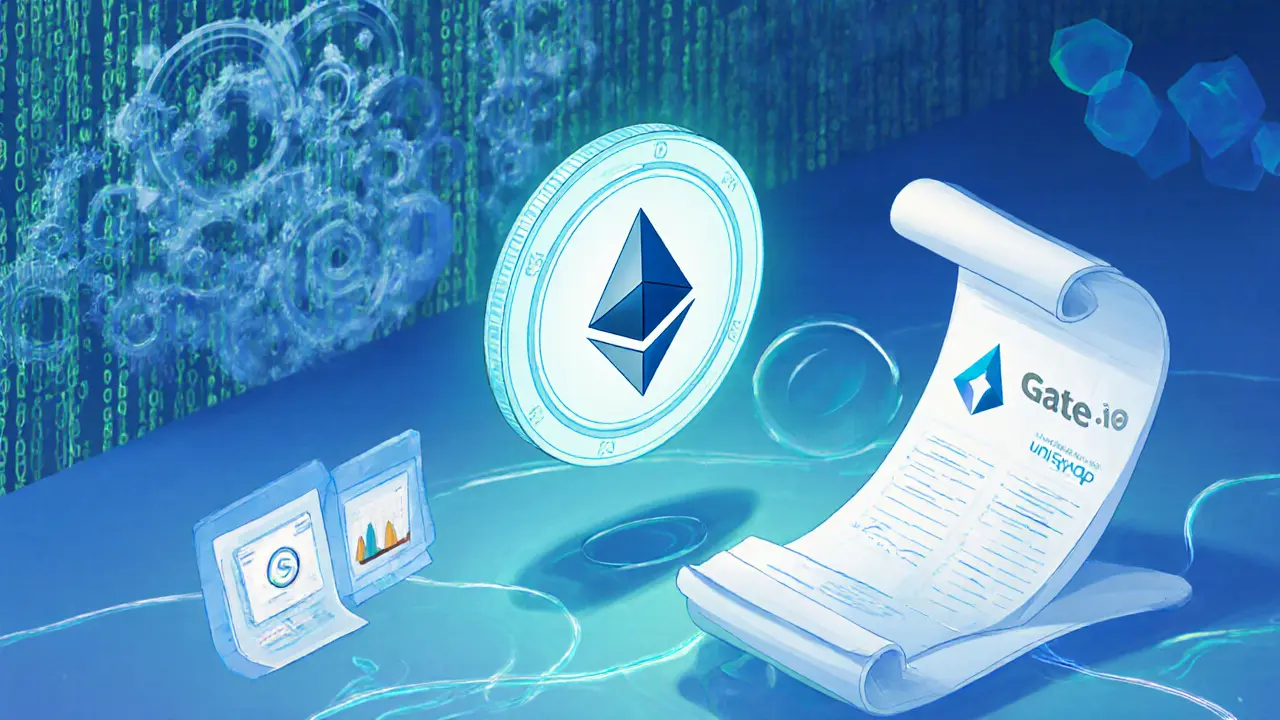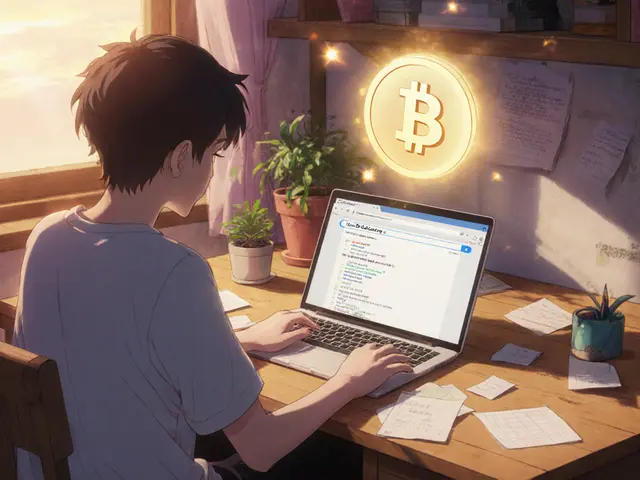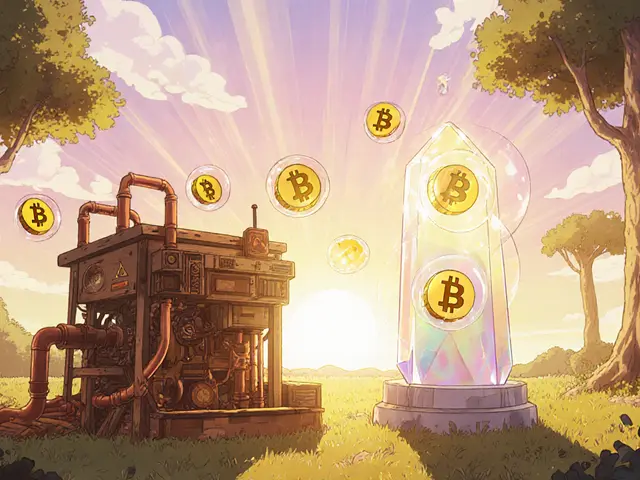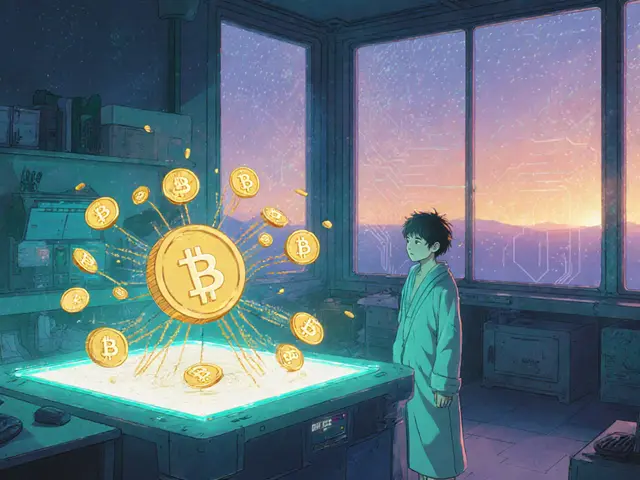One Share (ONS) Investment Risk Calculator
Token Overview
ERC-20 token on Ethereum with unclear utility and low liquidity.
Investment Parameters
Potential Outcomes
Enter your investment amount and risk tolerance, then click "Calculate Potential Outcomes" to see projected scenarios.
Key Risks
- Liquidity Risk High
- Volatility Risk High
- Unclear Utility Medium
- Regulatory Exposure High
Quick Facts
- One Share (ONS) is an ERC‑20 token on Ethereum that claims to give holders a stake in a DeFi ecosystem.
- It trades mostly on Gate.io; liquidity is very thin and price gaps are common.
- Current price hovers around $0.85‑$1.05 with a market cap near $100K.
- Supply numbers are unclear - Coinbase lists 100K circulating, other sites say “unknown”.
- Buying can be done on centralized exchanges (Gate.io, Coinbase) or via DEXes like Uniswap V2, but fees and slippage are high.
When you type "What is One Share (ONS) crypto coin" into a search engine, you’re probably looking for a clear definition, a sense of whether the token is worth your time, and step‑by‑step guidance on buying it. The answers below walk you through exactly that, from the tech basics to the real‑world risks you’ll face.
One Share (ONS) is a cryptocurrency token designed to represent ownership in a decentralized financial ecosystem on the Ethereum blockchain. It follows the ERC‑20 standard, which means it can be stored in any wallet that supports Ethereum assets and can be swapped on any platform that lists ERC‑20 tokens.
How the Token Works on Ethereum
Ethereum is a public, permissionless blockchain that lets developers create smart contracts - self‑executing code that runs exactly as programmed. Ethereum powers thousands of tokens, and ONS is one of them. Its contract address is 0x5BB29c33C4A3C29f56F8ACa40B4dB91d8a5fe2c5, which you can verify on Etherscan to see every transaction.
Being an ERC‑20 token, ONS can be transferred, approved for spending, and incorporated into DeFi protocols that support the standard. However, the token’s official documentation does not spell out specific utility or governance functions, so most of its value comes from market speculation and the promise of future protocol features.
Where You’ll Find ONS Trading
The token’s liquidity is heavily concentrated on a single centralized exchange: Gate.io. According to recent data, Gate.io accounts for over 99% of the daily ONS/USDT volume, which is typically under $10,000. Decentralized venues like Uniswap V2 see only a few dozen dollars of activity, meaning price impact can be severe if you try to trade more than a few hundred dollars at a time.
Other platforms such as Coinbase list the token with a market cap of roughly $102K and a circulating supply of 100K, but they provide little depth and usually route orders back to Gate.io’s order book.
| Exchange | Pair | 24h Volume (USDT) | Liquidity Depth (±2%) |
|---|---|---|---|
| Gate.io | ONS/USDT | $8,500 - $60,500 (varies by source) | $4 buy / $1 sell |
| Uniswap V2 | ONS/DAI | $50 - $287 | $71 both sides |
How to Buy One Share (ONS)
There are two main routes: centralized exchange (CEX) purchases and decentralized exchange (DEX) swaps.
- CEX method: Sign up on Gate.io (or Coinbase if you prefer a familiar UI). Deposit fiat (if supported) or a stablecoin like USDT. Search for the ONS/USDT pair and place a market or limit order. The process is straightforward, but you’ll need to go through the platform’s KYC requirements.
- DEX method: Connect a Web3 wallet (MetaMask, Trust Wallet, etc.) to Uniswap V2. Ensure you have enough ETH to cover gas fees - typically $5‑$15 depending on network congestion. Swap USDT or DAI for ONS, setting a slippage tolerance of at least 2% because the order book is so thin. You keep full custody of the token, but you also bear the gas cost and any price slippage.
Regardless of the route, always double‑check the contract address (the one above) before confirming a transaction. Scammers often create look‑alike tokens with similar symbols.

Price History and Volatility
ONS has experienced wild swings since its launch. Platforms disagree on the exact all‑time high, but the most commonly cited peak is about $30.50, while the lowest recorded price sits near $0.35. In the past week the token has bounced back roughly 24% on some trackers, yet over the last month it’s been down double‑digits on others. This erratic behavior is a red flag for anyone expecting stable returns.
Such volatility is amplified by the token’s low liquidity. Even a modest $5,000 purchase can push the price several percent away from the quoted market rate, resulting in unexpected slippage.
Token Supply and Economics
The supply data is murky. Coinbase lists a circulating supply of 100,000 ONS, but most other data aggregators either hide the number or label it “unknown”. Without transparent supply metrics, it’s hard to gauge inflation risk or predict future dilution.
Because the token’s economics are not fully disclosed, investors must treat any price movement as speculative. The lack of a clear token‑burn schedule or minting policy adds to the uncertainty.
Risks You Should Know
- Liquidity risk: With depth of only a few dollars at the best price, large orders can cause massive price swings.
- Data inconsistency: Different sites report wildly different prices and volume numbers, indicating poor data reliability.
- Unclear utility: The project does not publish a roadmap or detailed use‑case, so the token’s inherent value is ambiguous.
- Ethereum gas fees: Every transfer incurs ETH gas, which can be pricey during network congestion.
- Regulatory exposure: As an unregistered token with limited documentation, it could face future legal scrutiny.
Is One Share (ONS) Worth Your Time?
If you’re an experienced trader looking for high‑risk, high‑reward opportunities and you understand how to manage slippage on thin order books, ONS could be a short‑term speculative play. For most retail investors, however, the combination of unclear tokenomics, limited exchange adoption, and volatile price action makes it a risky addition to a diversified portfolio.
Next Steps for Interested Readers
- Verify the contract address on Etherscan to avoid scams.
- Choose your entry point - Gate.io for simplicity, Uniswap V2 for custody.
- Calculate expected gas fees and set a slippage tolerance (2‑5% is typical).
- Start with a small position (e.g., $100) to test liquidity.
- Monitor the token’s price across multiple trackers to catch data discrepancies.
- Keep an eye on any official announcements - if the team releases a roadmap, the risk profile could shift.

Frequently Asked Questions
What does the One Share (ONS) token actually do?
ONS is an ERC‑20 token that claims to give holders a stake in a DeFi protocol. At the moment, the protocol’s specific utilities and governance rights are not publicly documented, so the token’s primary function is speculative trading.
Where can I buy ONS safely?
The most liquid venue is Gate.io, where you can trade ONS/USDT after completing KYC. For full custody, you can use Uniswap V2, but you’ll need ETH for gas and must accept higher slippage.
Why do prices differ so much between CoinGecko, Binance, and Coinbase?
The token trades on very thin order books, so each platform shows the last price it recorded. Small trades can shift the price, and because some sites pull data from different exchanges, the quoted numbers can diverge dramatically.
Is the supply of ONS fixed?
Coinbase reports 100K circulating, but most trackers list the supply as unknown. Without an official token‑omics paper, the total and circulating supply cannot be confirmed.
What are the main risks of holding ONS?
Key risks include extremely low liquidity, price manipulation, lack of clear utility, volatile price swings, and Ethereum gas costs. Investors should only allocate money they can afford to lose.








Write a comment
Your email address will be restricted to us